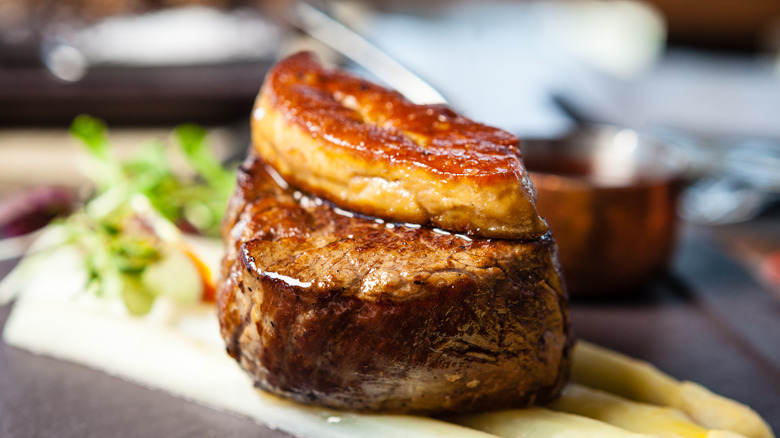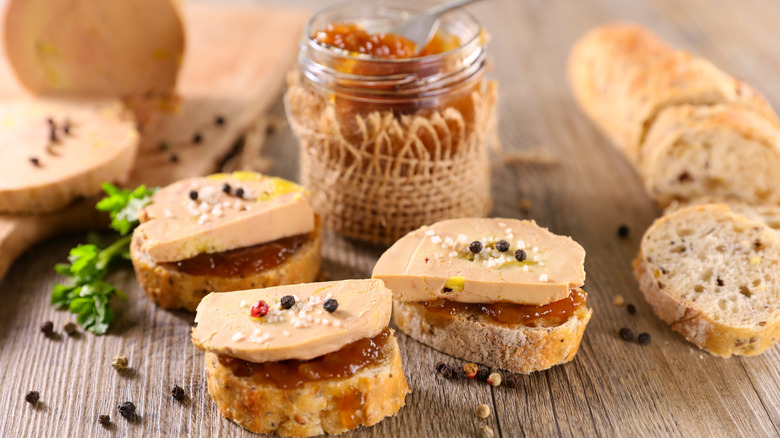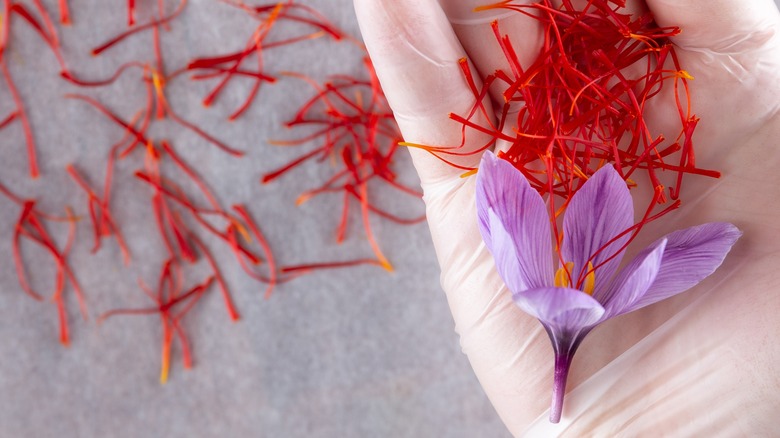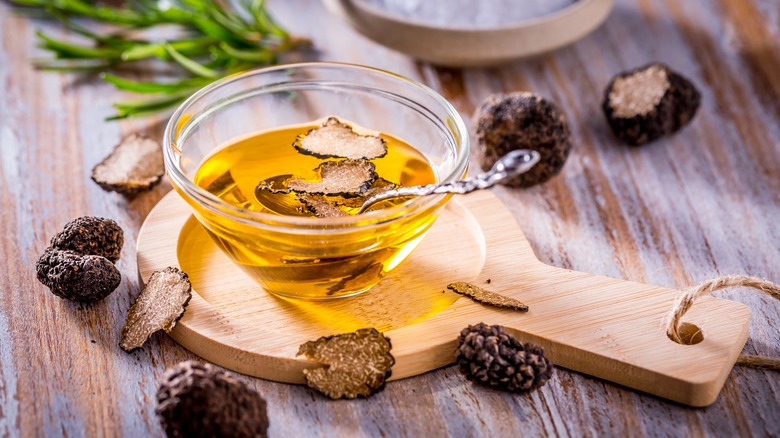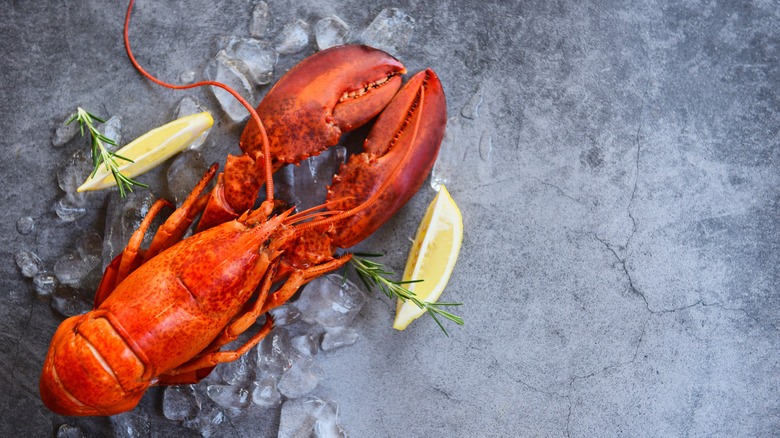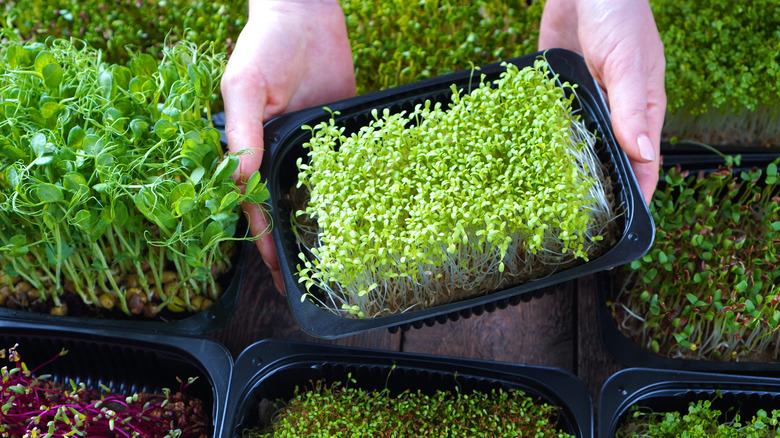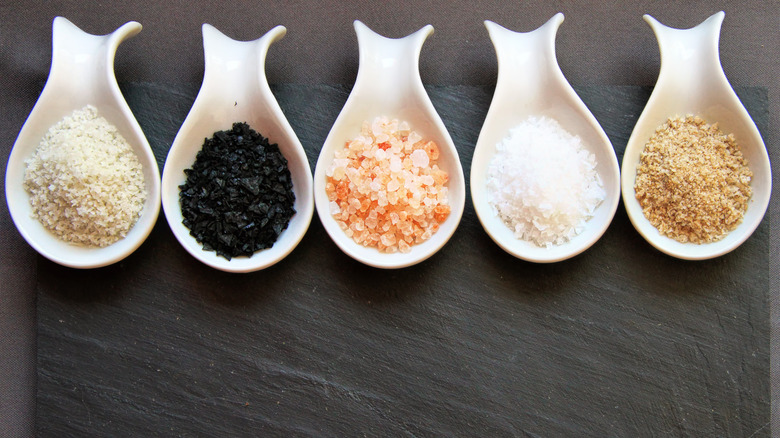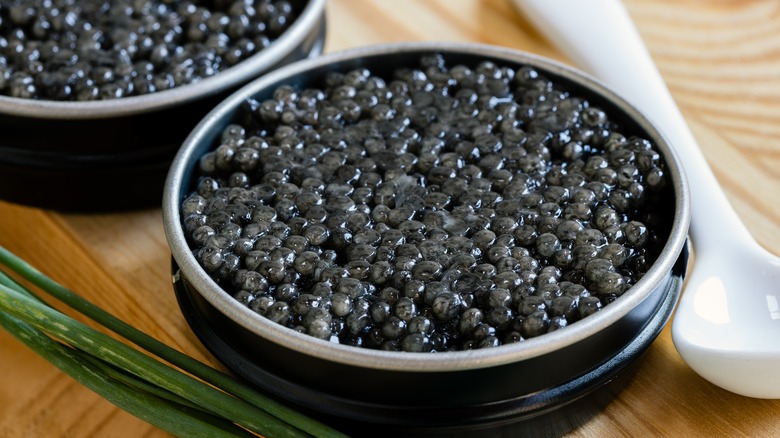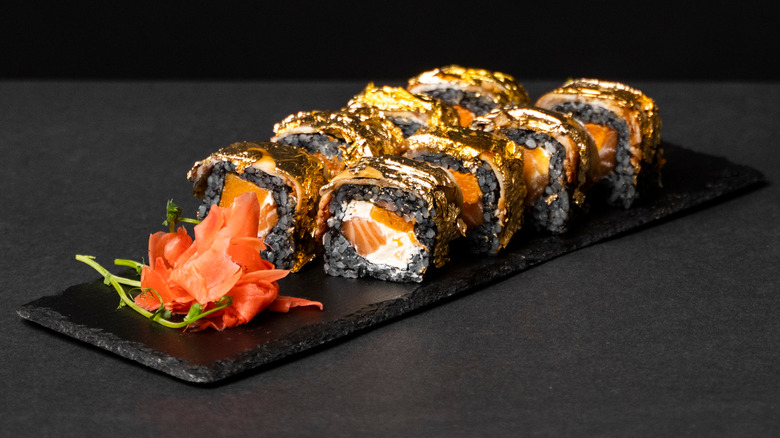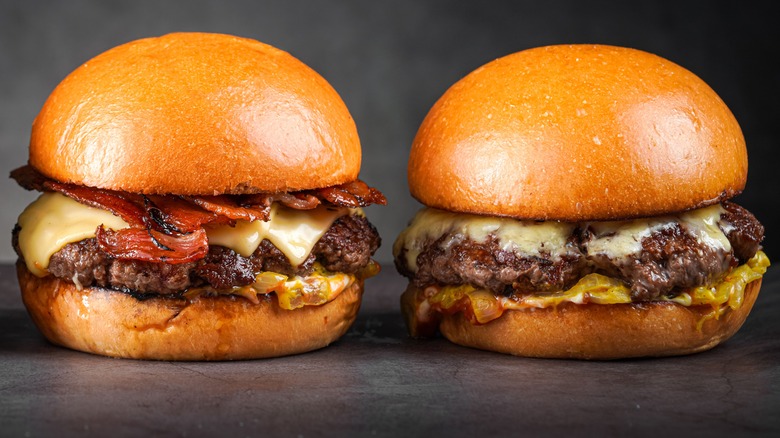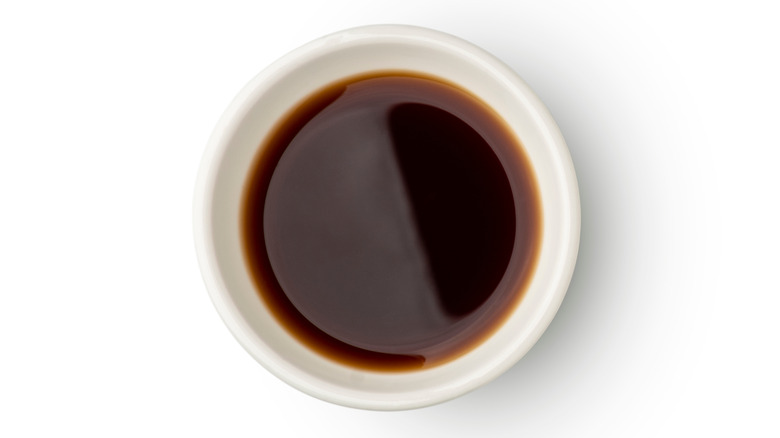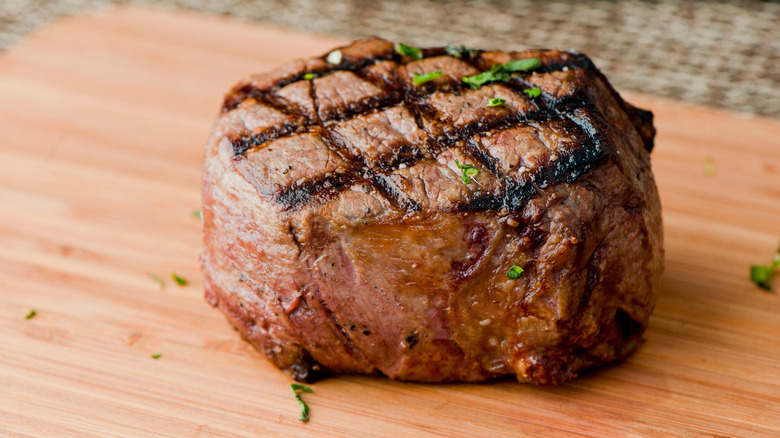Foie Gras And Other Gourmet Foods That Are Kind Of Overrated
Gastronomy abounds with luxurious and prestigious foods that will often be labeled as gourmet — a description that defines food as better, finer, more exclusive, and naturally, a bit more expensive than your standard supermarket fare. We should slowly savor these items, allowing them to permanently affect our senses and memory. Gourmet foods should always be of the highest standard, and though you might not personally appreciate them, the quality should not be disputed.
This round-up takes a closer look at some of the most popular gourmet ingredients that might not be worth all the money or, at the very least, need some price adjusting. Some of these are well-known favorites with a rich history deeply ingrained in culinary traditions that clearly have no intention of disappearing soon, but others are a result of slightly newer food trends and are often portrayed as better and nutritiously superior. To deem something overrated is, of course, a personal judgment and can't be precisely assessed for everyone, but this list might be a good guide when deciding on your next food splurge.
Foie gras
Foie gras is a beloved French gourmet specialty, but it is also one of the most controversial food products in the world. Translated as fatty liver, foie gras is made by force-feeding duck or geese several times per day, which causes their livers to enlarge to way over their natural size. The animals are fed cornmeal, which is inserted via a tube directly into their throats. The process is called gavage and has been standard practice in France for centuries.
Foie gras often graces fine dining menus and is described as one of the finest foods in the world, but the controversial method of production has been a matter of dispute for decades. While activists claim that the feeding process is cruel towards the animals, the producers argue that ducks and geese are not put through distress as they already swallow their food whole.
Regardless of the severity of the consequences that force-feeding has on animals, foie gras is simply not worth the price. We're not talking about the price you will pay for the dish but the sum of all the elements it takes to get foie gras to the plate. Despite its potential gourmet value and the fact that the French regard it as a piece of theirnational heritage, considering everything the animals are put through, the flavor can't make up for it, which makes foie gras the top contender in the overrated food department.
Saffron
Saffron is a flower whose stigmas — the delicate thin threads that are part of the female flowers — are used to produce the most expensive spice in the world. The high price — which regularly goes over $1000 per pound, while premium prices go well beyond that — is dictated by poor yields and demanding harvesting techniques. Saffron is difficult to cultivate as it calls for specific climate and soil conditions to grow successfully. The flowers bloom only once a year, and each flower holds only approximately three saffron threads. Adding to that, only manual harvest is possible as there is no automated way to extract the stigma from the rest of the flower.
Saffron is one of the ancient spices. It is used in some classic Iranian and Mediterranean dishes and is often paired with rice — the most famous examples being Spanish paella and Italian risotto alla Milanese. Saffron will deliver plenty of color to the dish, but when it comes to flavor, it sometimes doesn't have the ability to pierce through the other ingredients. Like the delicate threads, saffron's flavor is nuanced and subtle, and it is often overpowered, especially if used with other, more potent ingredients.
Though saffron is still a highly-sought spice, we can't shake off the feeling that it has more to do with its limited availability and the time-consuming and demanding cultivation and processing rather than the qualities saffron can add to dishes.
Truffle oil
Truffle oil is one of the ingredients that has long managed to get by and even thrive without anyone realizing that the product and its story are completely fabricated. If you ever fell for this devious trick, you might be surprised to find out that most truffle oil is not made with real truffles, and what you're paying for is just a batch of flavored oil. Not that anything is wrong with flavored oil — if this is your thing, feel free to use it any time — but the price of truffle oil is usually way too high for an artificially flavored bottle of olive oil.
Edible truffles are renowned in the food industry, and the finest examples usually come at a high price. Though they are touted as the ultimate gourmet ingredient, many people don't know much about truffles, and as the market is largely unregulated, truffle scams are relatively common, and it seems that truffle oil is a part of the problem.
Truffle oil was long presented as the most convenient and most affordable way to incorporate truffle flavor into your dishes, but what many consumers don't know is that truffles can't deliver much flavor to olive oil, so producers predominantly use a synthetically produced 2,4-dithiapentane that is supposed to imitate a truffle-like aroma. Essentially, your money is being spent on something that is falsely advertised, which makes this item possibly the most overrated thing on the list.
Lobster
Lobster is praised and loved for a reason. To savor the perfectly cooked, juicy meat nestled behind the hard lobster shell is certainly one of life's greatest pleasures, but does the quality justify the high price? Lobster is usually quite expensive because it is hard to harvest, and most stock is caught wild, which automatically commands higher prices. Add the processing and transportation, which needs to be fast and efficient as we're talking about a perishable seafood ingredient, and you will usually end with a hefty sum that is then translated into the final cost of the lobster. These parameters affect the price but also speak about lobster's problematic sustainability. Lobster has an image of a luxurious, gourmet product, which will also impact the market cost, sometimes regardless of the quality of the ingredient.
Considering all these factors, lobster is an overrated choice at restaurants, and you might want to choose a more sustainable option that won't break the bank. As a much better and more affordable alternative, opt for crab meat, which is usually equally delicious and juicy but less pricey than expensive lobster meat.
Microgreens
Microgreens have taken over the food industry in the last two decades. Best described as very young baby greens, microgreens have plenty of good characteristics, but the whole trend might be blown out of proportion. The biggest advantage of growing microgreens is that they don't need much space and have a relatively quick turnaround. They take approximately one to three weeks to grow, depending on the type of sprout. Many plants, including grains and legumes, are suitable to produce microgreens, but some of the most common include peas, arugula, mustard, broccoli, and chard. The final flavor of microgreens will depend on the type of sprout, but you can expect to find herbaceous notes and slight bitterness as the greens are so young.
Microgreens became coveted and trendy due to their nutrent-rich profile. According to research published on Science Direct, they are packed with minerals, vitamins, and antioxidants. Still, despite these positive characteristics, they fall into the overrated category simply because their price is usually too high. You can expect to pay approximately $20 to $40 per pound, depending on the type of greens, which is way more than what you would pay for the same amount of fully grown veggies, which take much longer to grow until they can be sold. Instead of blindly following every costly health trend, maybe we should focus on the already familiar nutrient-dense veggies that are way more affordable.
Gourmet salts
Gourmet salt is a relatively loose and undefined term that typically includes salt varieties different from regular table salt or pure sea salt. Next to sodium chloride, they usually have other additions that may provide extra flavor and change the texture. Some of these add-ons are completely natural minerals that are not removed in the later processing, but gourmet salts also include a wide variety of infused and artificially flavored examples. Pink Himalayan salt is probably one of the most popular varieties that attains its qualities naturally, but there is a wide variety of infused or blended salts with added herbs, citrus zest, or spices. Though gourmet salts may be an excellent way to add flavor to your dish, their price and sometimes fabricated "healthy" image are slightly controversial.
Essentially, all salt, including gourmet salts, mainly consists of sodium chloride. This means that you might get some tiny amount of extra minerals from some natural salts, but next to saltiness, you will not experience any extra health benefits from the trace minerals. With the varieties that have added ingredients, you're being overcharged for something you can easily make at home or add separately to the dish. Having good quality sea salt or some nice finishing salt is recommended but do not fall for colorful labels, health promises, and brand names that are usually way overpriced.
Caviar
Caviar doesn't need much introduction. This prized fish roe has long stood as one of the world's most exclusive and luxurious ingredients. Essentially, caviar is fish roe, but not all fish roe can be called caviar. The name is exclusively used for the roe harvested from several types of sturgeon. Caviars vary in price but usually don't sell cheap, and the final cost is generally determined by the origin of the roe. The most expensive caviar comes from the prized and now almost extinct beluga sturgeon, and the cheapest comes from abundant farmed varieties. Caviar has a long history, but its current status is rather complicated and tarnished by ethical questions and illegal trade. Sturgeons are the most endangered species group on the planet, and though many factors led to their diminished numbers, caviar harvesting is one of them.
Caviar certainly has its appeal, and the plump, briny orbs are the gold standard in the category, but the high price and the possibility of extinction should deter anyone from buying caviar. It might not be an overrated ingredient as such, but the cost of wiping out entire species is too high. For much better alternatives, look for other fish roes that can deliver similar textures and flavors but won't jeopardize an entire species.
Edible gold
Gold is one of the priciest and most prestigious materials in the world. Turning this dazzling commodity into jewelry makes perfect sense, but we're not so sure about the whole golden-dusted food idea. In its purest form, gold is an edible material, but as you may guess, because of its price, you will not often find it on the menu. The delicate golden flakes are sometimes used as a garnish in fine-dining restaurants, but you can also find tiny specks of gold inside some liquors. Though the shiny particles make a nice visual addition, the sad truth is that they don't do anything in the flavor department.
Essentially, apart from the visual appeal, wrapping your food in gold or dusting it with golden flakes will not have any effect on your dish apart from significantly raising the price. It may look pretty, but it will not add a textural component or boost flavor, so basically, you're paying for nothing. Leave these dated, pretentious traditions behind and forget about this overrated ingredient. We'd rather see our food dressed in flavor-packed golden-colored glazes than dusted with overpriced, tasteless gold leaf.
Wagyu burgers
Wagyu is a type of cattle native to Japan that was created by breeding native and imported cattle. It is also the most expensive variety of beef you can buy. Wagyu was previously exported, but following the 1997 ban on export, Japan is currently the only country that officially cultivates 100% pure wagyu; but the situation is a bit more complex. As wagyu was previously exported, you can find wagyu-labeled beef outside Japan, though its provenance is often questioned. Japan has a strictly regulated wagyu production and a rigorous grading system, ensuring the quality remains unparalleled.
The best wagyu steaks stand out for the exquisite marbling uniformly spread throughout the meat. The distribution of lean meat and fat results in a beautifully tender texture and perfectly balanced flavor, allowing it to attain that melt-in-your-mouth quality. Even with the lower-grade wagyu, it's difficult to find flaws, but an issue appears when this beautiful meat is ground and stuffed into pricey burgers.
We're not claiming that wagyu can't make a great burger, but if you're going for the finest and the most expensive beef cut, you don't want to suffocate it with overpowering ingredients. It should be served in its original form to showcase the amazing bouquet of flavors. If you're eating ground beef with a bunch of toppings and condiments, you might as well just have as burger made with normal beef for a fraction of the cost. The difference will rarely be noticeable.
Liquid smoke
Smoking is a cooking method in which food is exposed to smoke. During the process, the food attains distinctive smoky notes in the aroma and flavor. Traditionally, this will be done by burning wood, but as the process calls for sometimes unavailable equipment and space, liquid smoke is a possible replacement.
Liquid smoke is made with a process in which smoke is subjected to condensation, during which it turns into liquid that retains those distinctive smoky flavors. After all the grittiness is removed, what is left is a brownish liquid with a very concentrated smoky flavor and aroma. The final profile will depend on the type of wood used in the process and if the liquid smoke has been adjusted with additional ingredients, but it is typically very potent, so you want to use it in the tiniest amounts.
Though liquid smoke sounds like a great option to add smokiness with just a touch of liquid, in reality, you will never get the same results or achieve the full depth of flavor that you would with traditional smoking. It can slightly alter and boost flavor, but other than that, it will deliver subpar results and become a redundant addition to your kitchen. Though liquid smoke is relatively inexpensive, its use is pointless and overrated. To add a refined smoky note, opt for smoked paprika that will deliver heat, complexity, and smokiness and will never have any synthetic qualities.
Filet mignon
Beef is packed with flavor and protein, and the high-quality stuff doesn't call for garnishes as the taste is too precious to be smothered with other ingredients. A nice steak usually works well with just a dollop of butter and a sprig of fresh herbs. Though it depends on the cut, beef is also one of the most expensive meats on the market. Steaks can come from various parts of the animal, but the one that usually reaches the highest price is filet mignon. This cut has a somewhat mythical status in the restaurant industry, though it is questionable whether it deserves so much love and the high cost that comes with it.
Filet mignon comes from the tenderloin, a thin section nestled above the rib cage that is considered the most tender piece of the animal. The tip of this tenderloin is used for filet mignon; as you may guess, each animal has a very small portion of this cut. The meat from tenderloin lacks fat, resulting in a clean cut with no marbling. And though this lean quality is often praised, the truth is that fat equals flavor, so you want at least some amount of it on your steak. Without fat, you will get a nice, tender piece of meat, but there isn't much flavor to it. For a much better ratio of flavor to cost, go for juicy, marbled ribeye.
Champagne
Champagne might be the oddball on the list as it's a beverage. It also may be one of the most famous additions to this list. Champagne is the ultimate expression of luxury. This legendary sparkling wine can only be produced in the Champagne region of France, and some varieties can rank among the most expensive wines in the world. Of course, the examples from the region can vary, but we usually talk about superior wine production techniques and high value. Despite its unquestionable quality, Champagne found its place on the list because you can find superb Champagne alternatives at a great price.
Champagne is a sparkling wine produced with méthode champenoise, a technique in which a second fermentation takes place in the bottle. This means that the wine spends some time on the lees and is able to attain complexity, fine perlage, and refined characteristics that set it apart from other sparkling wines. Though it was created there, Champagne is not the only region that utilizes the traditional champenoise method. Similar wines are produced in other French regions where they are labeled as crémants. The best crémants will display the same or similar qualities as Champagne but are usually more affordable. Outside of France, you can look for similar characteristics in Italian Franciacorta, which is also a reasonably priced option.
